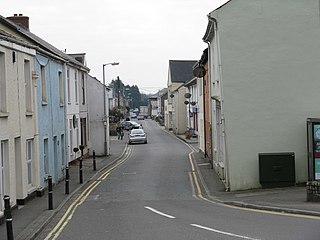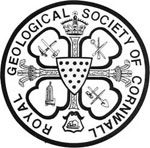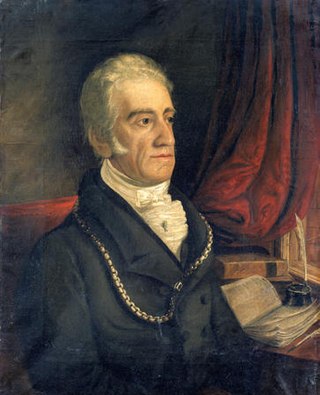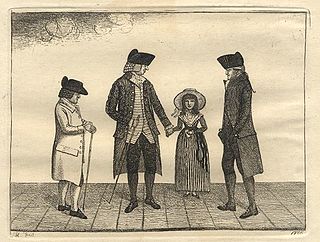
William Pryce (baptised 1735–1790) was a British medical man, known as an antiquary, a promoter of the Cornish language and a writer on mining in Cornwall. [1]

William Pryce (baptised 1735–1790) was a British medical man, known as an antiquary, a promoter of the Cornish language and a writer on mining in Cornwall. [1]
He was the son of Dr. Samuel Pryce of Redruth in Cornwall, and Catherine Hill; William Borlase was a great-uncle on his mother's side. [1] Philip Webber of Falmouth acted as his guardian when he was left an orphan. He claimed to have studied anatomy under John Hunter, and from about 1750 he practised as a surgeon and apothecary at Redruth. [2]
Pryce owned a small share in the copper mine of Dolcoath in Cornwall. For ten years he was also an investor in the adjoining mine of Pednandrea, which was worked for both tin and copper. [2] It was near the future site of the Redruth railway station. [3]
Soon after 1778 Pryce "became M.D. by diploma" and on 26 June 1783 he was elected Fellow of the Society of Antiquaries of London. He was buried at Redruth on 20 December 1790. [2]
Pryce published his major work, the Mineralogia Cornubiensis, in 1778. It was a study of the mining world of Cornwall, historical and practical. A second work, Archæologia Cornu-Britannica, was published in 1790. It contained a Cornish language vocabulary of 64 page, and a grammar. Much of the material was taken directly from the collections of Thomas Tonkin and William Gwavas, as acknowledged in the preface. [2]
Pryce married Miss Mitchell of Redruth, and left two sons, William Pryce and Samuel Vincent Pryce, both of whom became surgeons there. [2]
![]() This article incorporates text from a publication now in the public domain : Lee, Sidney, ed. (1896). "Pryce, William". Dictionary of National Biography . Vol. 46. London: Smith, Elder & Co.
This article incorporates text from a publication now in the public domain : Lee, Sidney, ed. (1896). "Pryce, William". Dictionary of National Biography . Vol. 46. London: Smith, Elder & Co.

Redruth is a town and civil parish in Cornwall, England, United Kingdom. The population of Redruth was 14,018 at the 2011 census. In the same year the population of the Camborne-Redruth urban area, which also includes Carn Brea, Illogan and several satellite villages, stood at 55,400 making it the largest conurbation in Cornwall. Redruth lies approximately at the junction of the A393 and A3047 roads, on the route of the old London to Land's End trunk road, and is approximately 9 miles (14 km) west of Truro, 12 miles (19 km) east of St Ives, 18 miles (29 km) north east of Penzance and 11 miles (18 km) north west of Falmouth. Camborne and Redruth together form the largest urban area in Cornwall and before local government reorganisation were an urban district.

St Blazey is a small town in Cornwall, England, United Kingdom.

Gwennap is a village and civil parish in Cornwall, England, United Kingdom. It is about five miles (8 km) southeast of Redruth. Hamlets of Burncoose, Comford, Coombe, Crofthandy, Cusgarne, Fernsplatt, Frogpool, Hick's Mill, Tresamble and United Downs lie in the parish, as does Little Beside country house.
Robert Hoblyn MP FRS (1710–1756) was an English politician and book collector. He was elected a Fellow of the Royal Society in 1745. He was a Member of Parliament representing the city of Bristol in 1741 and 1747.

The Royal Geological Society of Cornwall is a geological society originally based in Penzance, Cornwall in the United Kingdom. It was founded in 1814 to promote the study of the geology of Cornwall, and is the second oldest geological society in the world, after the Geological Society of London which was founded in 1807.
Matthew Paul Moyle was an English meteorologist and writer on mining, second son of John Moyle, by Julia, daughter of Jonathan Hornblower, was born at Chacewater, Cornwall, 4 October 1788, and educated at Guy's and St. Thomas's Hospitals.
John Hawkins was an English geologist, traveller and writer.

John Taylor was a British mining engineer.
George Clement Boase was an English bibliographer and antiquary.

Scorrier is a village in Cornwall, England, United Kingdom. It is in the civil parish of St Day, about 2 miles (3 km) northeast of the centre of Redruth and 3 miles (5 km) southeast of the coast at Porthtowan, on the A30 road at the junction of the A3047 road that leads west to Camborne and the B3298 road south to Carharrack. The Plymouth to Penzance railway line passes through the village and between 1852 and 1964 it had its own station. A. E. Rodda & Son, the principal maker of clotted cream is based here.

Robert Pollard (1755–1838) was an English engraver and painter.

Sir Benjamin Hobhouse, 1st Baronet (1757–1831) was an English politician. He served as Member of Parliament from 1797 to 1818.

William Jenkins Rees was a Welsh cleric and antiquary.

James Rae (1716–1791) was a Scottish surgeon, known as the earliest lecturer on surgery in Edinburgh and with a particular reputation as a dental surgeon.

Sir James Prior (c.1790–1869) was an Irish surgeon and writer.
Richard Price (1790–1833) was a British barrister, known as philologist, antiquarian, and literary editor.
Stebbing Shaw was an English cleric, local historian and topographer. He is remembered as a county historian of Staffordshire
Charles William Boase (1828–1895) was an English academic, antiquarian and librarian.
Theophilus Polwhele or Polwheile was an English ejected minister.